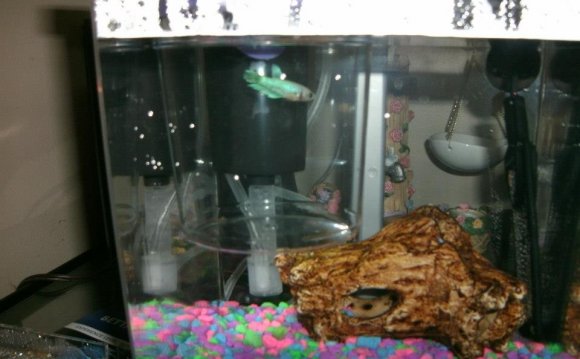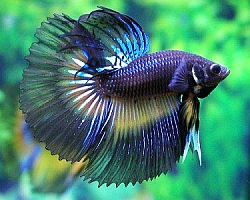
 Betta Fish Center > Betta Fish: Facts and History > Betta Senses
Betta Fish Center > Betta Fish: Facts and History > Betta Senses
Betta Vision
Though Bettas have monocular vision which allows them to see in two different directions at the same time, they also lack depth perception. Bettas cannot adjust quickly to changes in brightness because their iris works so slowly. The Betta’s vision is relatively poor. To aid this weakness, this species uses a "lateral line, " which runs down their sides. This lateral line consists of small holes that measure water pressure when approaching objects, allowing the Betta another sense to compensate for its lack of keen eyesight.
Betta Hearing
 The anatomy of the Betta's ear is fairly simple, consisting of a single inner chamber. Essentially, a Betta hears vibrations that travel through the water. The swim bladder also plays an important role in hearing by magnifying and distinguishing different sounds.
The anatomy of the Betta's ear is fairly simple, consisting of a single inner chamber. Essentially, a Betta hears vibrations that travel through the water. The swim bladder also plays an important role in hearing by magnifying and distinguishing different sounds.
Betta Taste & Smell
The Betta smells through its nostrils and its taste buds are located in the mouth, fins and lips. Although this would seem to enhance the Betta’s taste, this species has very limited smell and taste recognition and it can only identify odors within a short distance.
The Labyrinth Organ
This is a special organ that processes oxygen from atmospheric air. It is highly valuable and has a survival advantage since Bettas evolved in waters with low oxygen content. It is located within the head just behind the gills. Read more about the Labyrinth organ here.









